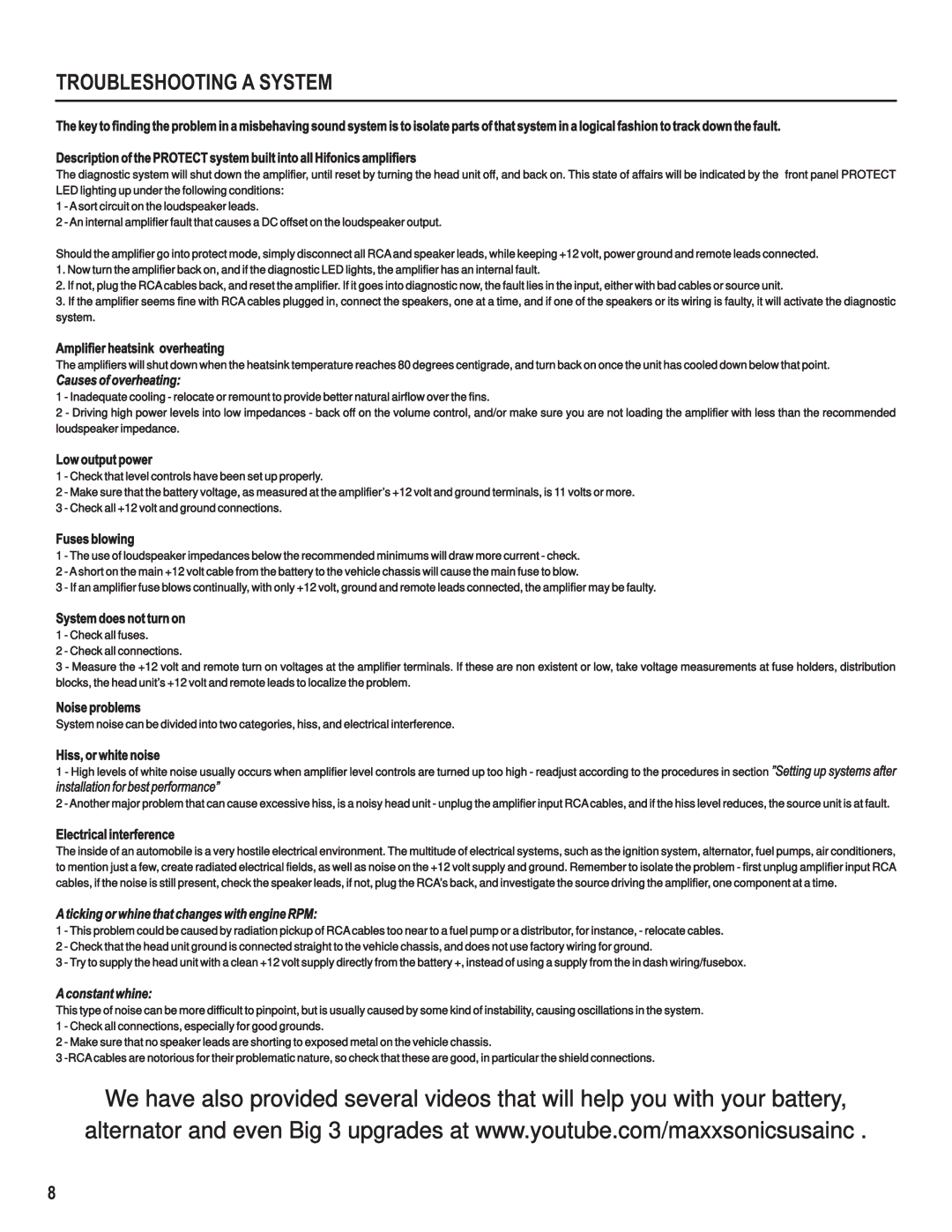HS800.4, HS300.4, HS500.4, HS1500.1D, HS2500.1D specifications
Hifonics, a brand synonymous with powerful and reliable car audio equipment, has made significant contributions to the amplifier market with its HS series. This collection includes five impressive models: the HS2500.1D, HS1500.1D, HS500.4, HS300.4, and HS800.4. Each of these amplifiers is designed to deliver exceptional performance, ensuring that users enjoy their audio experience to the fullest.The HS2500.1D is a monoblock amplifier that epitomizes power and efficiency with its rugged build and advanced Class D technology. Capable of delivering up to 2500 watts of max power, it enables users to drive even the most demanding subwoofers with ease, ensuring deep bass and clarity. This unit features a low-pass filter, adjustable gain control, and a variable bass boost that allows customization for different audio setups.
The HS1500.1D is another standout monoblock amplifier that brings a potent 1500 watts of max power output. This amplifier is engineered with a highly efficient design, which contributes to minimal heat generation and extended performance. It also comes with a low-pass filter and a bass boost feature, making it versatile for various sound preferences.
For those who need a versatile multi-channel amplifier, the HS500.4 model offers four channels of amplification. With a max power output of 500 watts, it is perfect for powering door speakers and subwoofers in a full sound system. Its high and low-level inputs provide flexibility in installation, allowing users to connect to virtually any audio source.
The HS300.4 is another four-channel amplifier, delivering a maximum output of 300 watts. It shares many of the same features as the HS500.4, including an adjustable low-pass filter, high-pass filter, and bass boost, providing users the ability to build a balanced audio environment tailored to their specific needs.
Finally, the HS800.4 offers a powerful solution with an impressive 800 watts of max power, ideal for anyone looking to maximize their in-car audio system. This amplifier includes features like a variable crossover and multiple speaker outputs, giving users the ability to fine-tune their sound.
All models in the Hifonics HS series are constructed with durability in mind, featuring heat-dissipating design elements to ensure long-lasting performance under heavy use. With a compelling mix of power, efficiency, and customization, the Hifonics HS amplifiers are perfect for both casual listeners and audiophiles seeking a premium sound experience in their vehicles.
